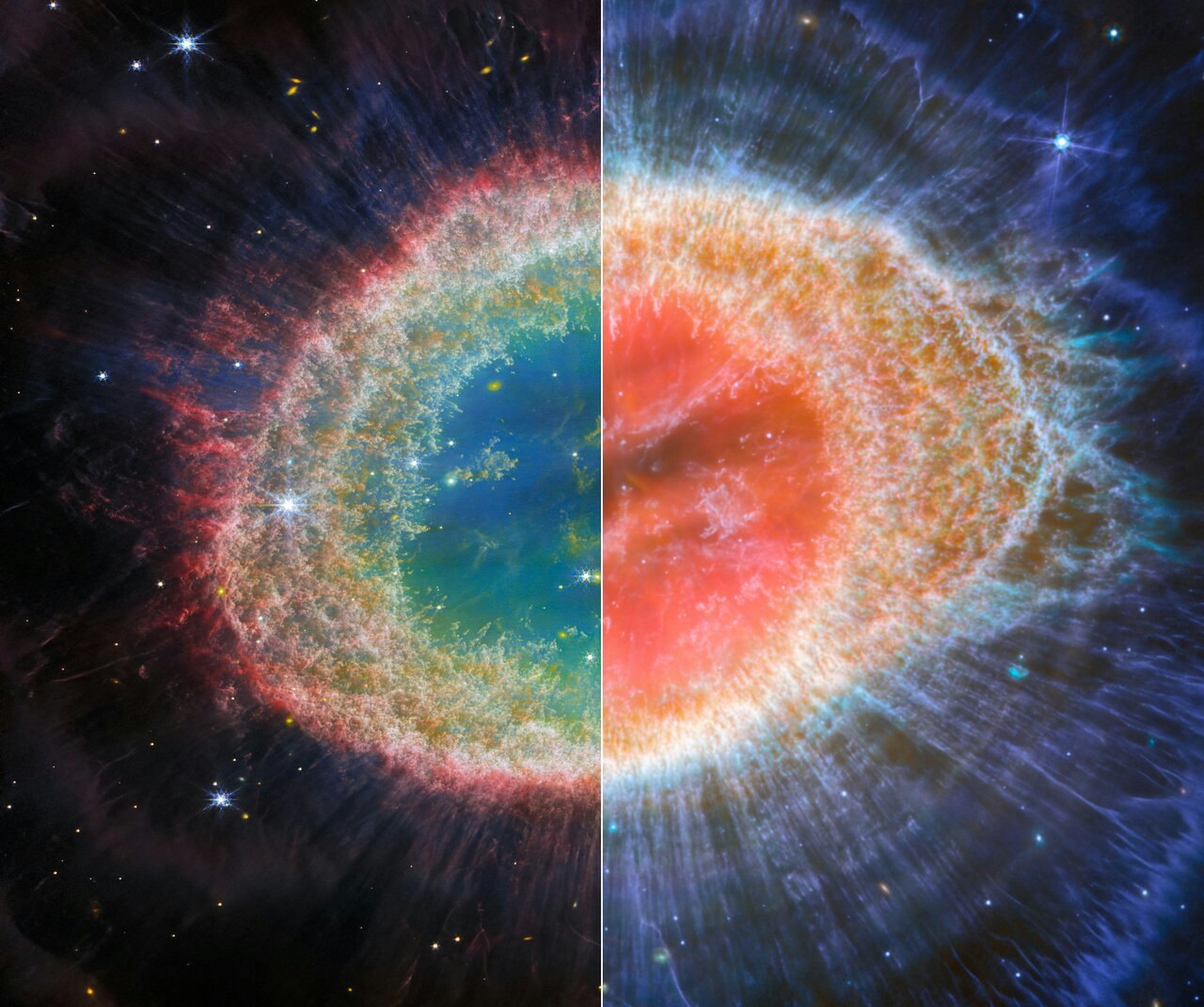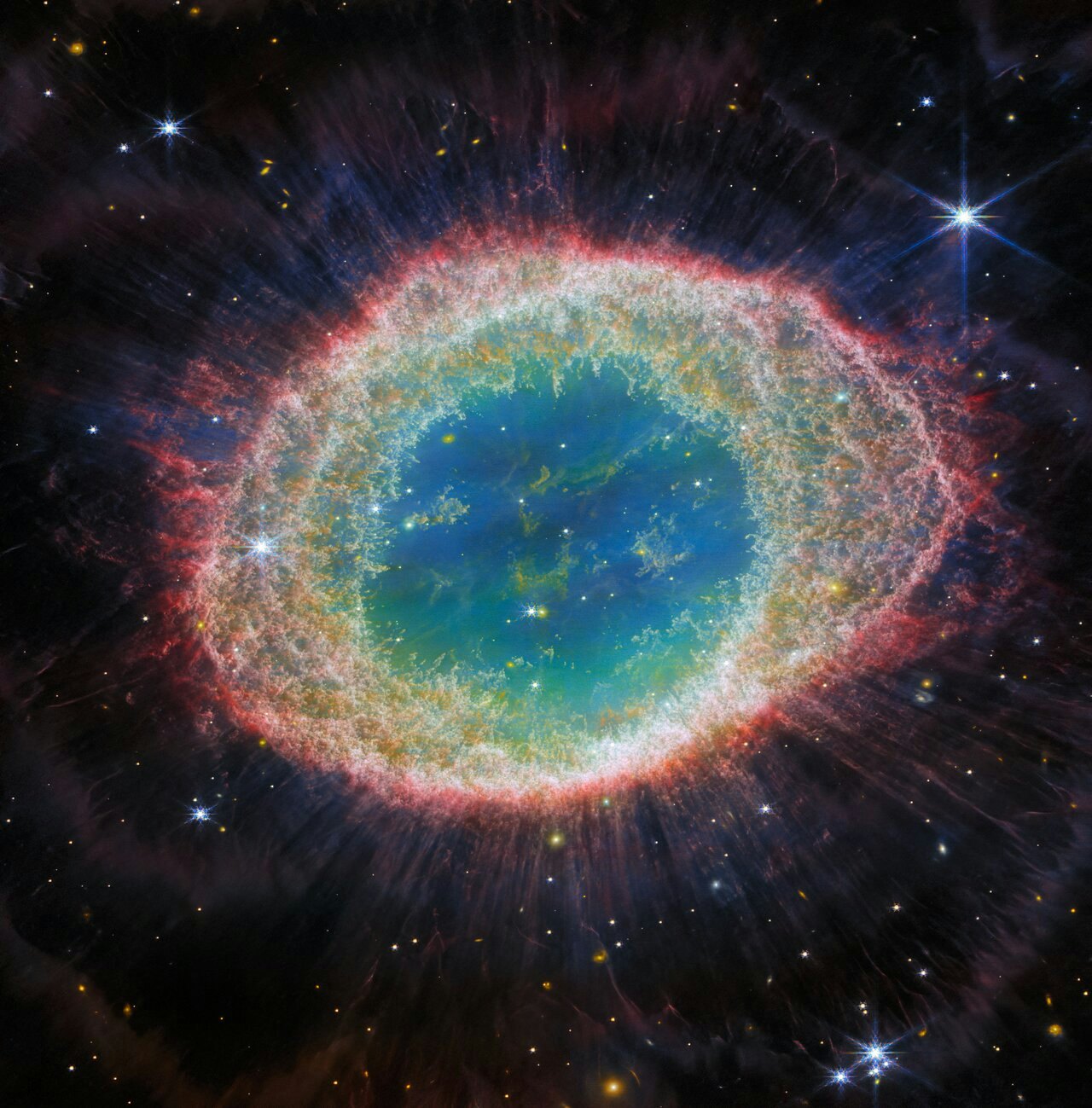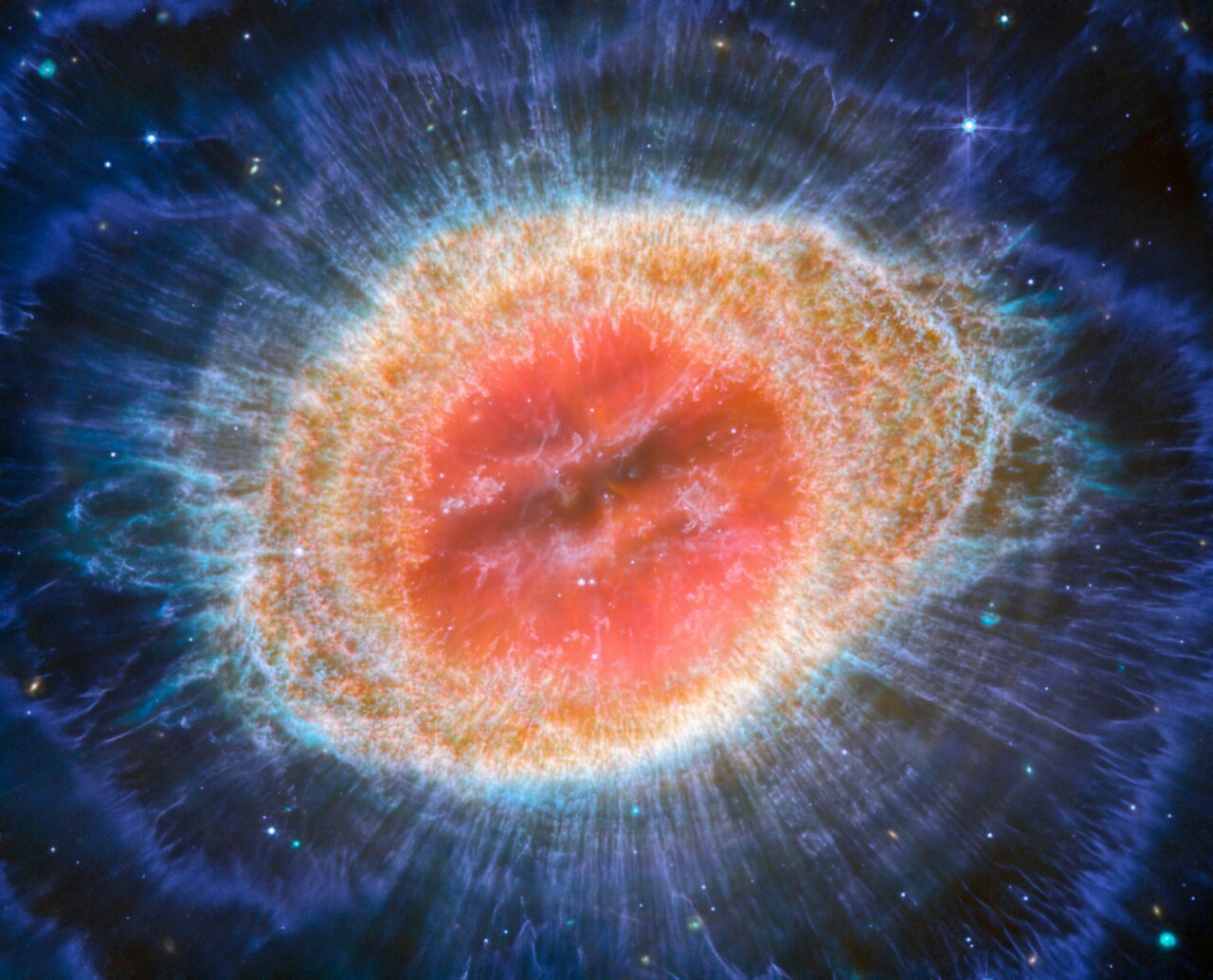
Nestled some 2,500 light-years away in the Ring Nebula, a star is in the last throes of its life.
And as it dances with a companion star, at probably the same distance apart as Earth is to Pluto, the dying star releases the last parts of itself in the shape of grand arches and concave circles. Thanks to the new James Webb Space Telescope (JWST), which began to take science observations just last summer, astronomers are gaining an intimate and never-before-seen look at the Ring Nebula.
On Monday, the European Space Agency (ESA) published a trio of dazzling images from two of the telescope’s four instruments: the Near-Infrared Camera (NIRCam) and the Mid-Infrared Instrument (MIRI). ESA manages the telescope alongside NASA and the Canadian Space Agency.

When astronomers peer into this celestial object, they are looking down through a pole. The perspective is comparable to a dancer looking down towards their feet, where the rings of this nebula are like their ballerina tutu skirt.
This kilt is typical of planetary nebulas, regions of dust and gas whose shapes resemble planets like Saturn. A low to medium mass star, like the one that once shined at the center of the Ring Nebula a long time ago, will expel its outer layers into space when it reaches the end of its life. Planetary nebulas are packed with information about how many stars, including the Sun, will behave when they reach their finale. And they’re a feast for the eyes, too.
What does JWST’s imagery show?
“Nebulae like the Ring Nebula reveal a kind of astronomical archaeology, as astronomers study the nebula to learn about the star that created it,” ESA officials write in Monday’s announcement.

ESA published three images from the telescope.
The main image shows the NIRCam and MIRI views spliced together side-by-side. Each instrument can see different structures within the Ring Nebula because they each observe the infrared band of the electromagnetic spectrum, but at different wavelengths. Space agency teams later highlight different regions by adding color.
In the NIRCam image, filaments of material are more clearly visible within the cavity of the Ring Nebula. On the other hand, the MIRI image does a better job at resolving the main ring’s concave circles.
These shapes, riddled with clues about dust molecules and ultraviolet radiation fields, are a beautiful testament of what happens when a star dies.







